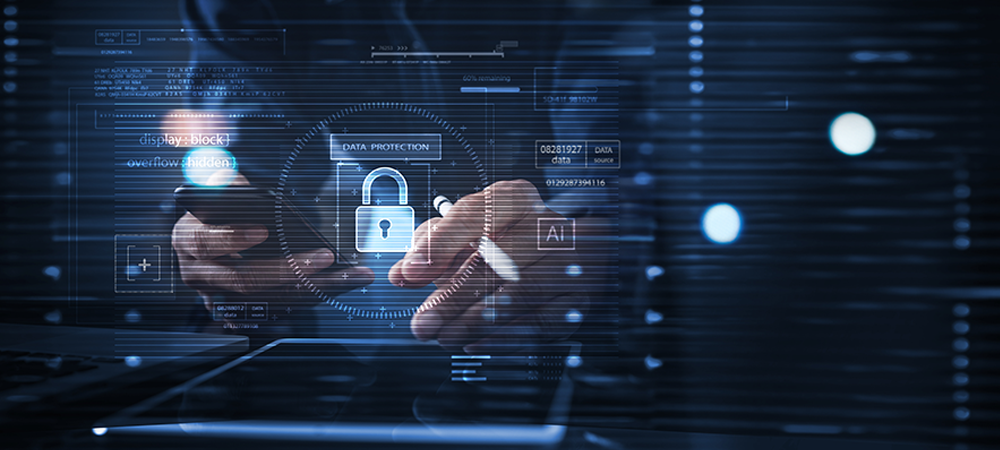Patrick Harding, Chief Product Architect, Ping Identity
Identity Management Day is an opportunity to underline how a decentralized approach to identity can positively impact both security and digital experiences.
Not only does it eliminate a centralized source of information for hackers to attack, but it leads to greater privacy and trust and empowers individuals with the control over their identities – something incredibly valuable in a digital-first world.
The time is now to secure our workforce, build customer trust and deliver the seamless and secure digital experiences individuals deserve.
John Scott, Lead Cyber Security Researcher, CultureAI.
Businesses need to reevaluate their policies around keeping customer personal identifiable information.
Up until recently, businesses often operated under the notion that the more customer data they amassed, the more value they could extract from it.
However, with the escalating risk of data breaches, this approach is no longer practical.
Instead, it’s becoming increasingly crucial for businesses to adopt a more cautious stance by collecting only the minimum amount of data necessary and implementing measures to either destroy or anonymise it after a certain period.
Anonymising data is a way of extending the value of the data while reducing the risk associated with storing personally identifiable information.
This shift in approach not only mitigates the potential impact of data breaches but also aligns with the principles of data minimisation and privacy protection advocated by modern data regulations.
Scott Silver, CEO, Integral Partners, a Xalient Company
Identity compromise is a major concern that continues to escalate, Identity Management Day aims to create broader awareness for both organisations and individuals around this critical issue.
Last year saw a 17% increase in identity compromise, affecting nearly 250 million victims.
Companies must manage and secure their digital identities to protect employees, customers and their data.
With digital identities evolving at a rapid pace, identity security is a crucial aspect of cybersecurity.
As the threat landscape continues to evolve and cybercriminals have access to a host of new and more powerful technologies to harness their skills, companies need to be a step ahead and implement Zero-Trust strategies to keep the identities of their employees and customers safe and secure.
Lim Teck Wee, Area Vice President, ASEAN, CyberArk
This Identity Management Day, the push to educate business leaders, IT decision-makers and the general public about the importance of managing and securing identities comes at the perfect time.
According to the 2023 CyberArk Identity Security threat landscape survey, 99.9% of Singapore organisations expected identity-related compromise last year. This shows that compromising identities remains the most effective way to access sensitive data and assets – and attackers know it.
James Dyer, Threat Intelligence Lead, Egress
In the age of online oversharing, the digital breadcrumb trails we leave across the web are gold dust for threat actors looking to exploit people’s identities.
The art of cyber surveillance has advanced, with cybergangs employing open-source intelligence (OSINT) to create comprehensive profiles of their targets to create hyper-personalized phishing emails.
The introduction of AI tools and chatbots has slashed the time it takes from data reconnaissance to full-blown attack. AI is enabling the automation and acceleration of data analysis, to quickly tailor phishing emails with convincing personalization.
Our recent research shows 61% of Cybersecurity leaders are losing sleep over AI chatbots being used to create phishing campaigns – plus 63% are specifically concerned about deepfakes.
Managing your digital footprint can be as straightforward as reducing your email newsletter subscriptions and deactivating old social media profiles. Shrinking the available pool of personal data online weakens the tools cyberattackers have at their disposal.
Denis Dorval, Vice President, International EMEA & APAC, JumpCloud
Despite large-scale cyberattacks dominating the headlines and the growing emphasis on security in the boardroom, instilling good cyber hygiene into the culture of an organisation remains a challenge.
The easiest way for malicious hackers to access a company’s digital assets is through stolen credentials. Compromised identities are the top reason organisations are infiltrated. Therefore, controlling user access is one of the IT department’s most critical responsibilities, made more complex by the constant need to balance efficiency, productivity, and security.
Finding the balance between giving verified users easy access to IT resources without compromising security remains a challenge for IT admins.
This is by no means an easy task. Modern IT environments are now incredibly diverse. As a result, security strategies have shifted from securing the physical network perimeter to defending a large, disparate attack surface, comprising devices, on-prem/cloud resources, operating systems and networks.
Although a distributed environment brings flexibility, it presents IT teams with an immense challenge and demands a completely different approach when it comes to Identity Management
A modern Identity Management platform helps IT teams centralise control over user access while also protecting credentials. When users and their digital identities are not centrally managed, it’s virtually impossible to get visibility into their resource access privileges, which devices they’re using to access company resources and whether their systems and software are appropriately updated and patched. Centralising Identity Management ensures that IT teams can monitor the access privileges across their organisation and allows them to implement robust security measures whilst creating a frictionless experience for users.
An effective, long-term IM strategy uses risk assessment and contextual intelligence to guide IT admins on when to challenge users without standing in the way of a flexible, smooth working experience.


